 As a North-West based garden design business, The Cheshire Garden was thrilled to learn that the Royal Horticultural Society (RHS) had secured a site in Salford to establish a new world class public garden. RHS Bridgewater is currently being developed on the former location of Worsley New Hall, and when the RHS began offering the opportunity to tour the site while under development, I jumped at the chance.
As a North-West based garden design business, The Cheshire Garden was thrilled to learn that the Royal Horticultural Society (RHS) had secured a site in Salford to establish a new world class public garden. RHS Bridgewater is currently being developed on the former location of Worsley New Hall, and when the RHS began offering the opportunity to tour the site while under development, I jumped at the chance.
Leaving the motorway and driving along leafy Leigh Road, an imposing set of wrought iron gates within a long stone wall are passed giving an early hint of the vast site which becomes visible on turning down the access road. At 154 acres, RHS Bridgewater is the largest garden project currently in development in Europe. Congregating at what was the entrance to a garden centre (just one of the many ways the site has been used over the years), me and my fellow tour participants were kitted out in some natty high-vis.
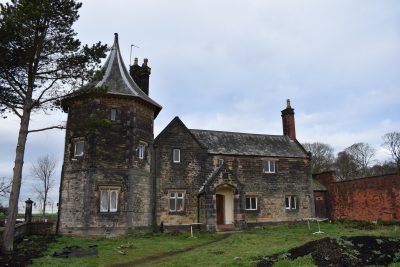
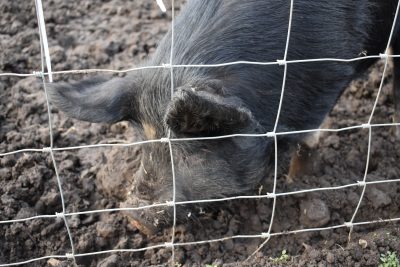 We started the tour at the Gardener’s Cottage, a listed building dating from the 1840s. The gothic style gives a flavour of what the long since demolished Worsley New Hall would have been, albeit on a much grander scale. Here we learned that the cottage was occupied until 1939 by William Upjohn, the longest serving gardener at the Hall, who remained long after he had retired from service. As we moved on we passed a small herd of heritage pigs, happily foraging in the Winter sun, which have been brought on site as a traditional method of breaking up the soil where a new orchard is to be established.
We started the tour at the Gardener’s Cottage, a listed building dating from the 1840s. The gothic style gives a flavour of what the long since demolished Worsley New Hall would have been, albeit on a much grander scale. Here we learned that the cottage was occupied until 1939 by William Upjohn, the longest serving gardener at the Hall, who remained long after he had retired from service. As we moved on we passed a small herd of heritage pigs, happily foraging in the Winter sun, which have been brought on site as a traditional method of breaking up the soil where a new orchard is to be established.
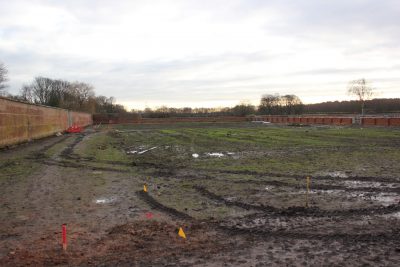
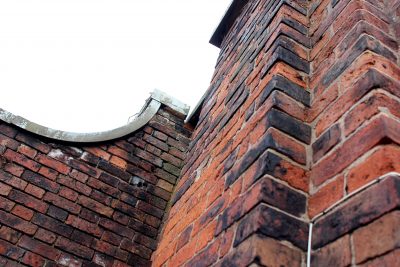 The central feature of the RHS Bridgewater is the restoration and reimagining of the Walled Garden, itself an impressive 11 acres. This will host a series of ‘formal’ gardens including a Therapeutic Garden and Learning Garden each of which will support the aims of RHS Bridgewater in promoting health and wellbeing and skills development. As well as creating the Master Plan for the whole site, one of my favourite landscape designers, Tom Stuart-Smith, has designed a Paradise Garden which will provide a stunning centrepiece to the Walled Garden. In addition, the Kitchen Garden has been designed by Chelsea medal winners the Harris-Bugg Studio, which is sure to deliver a creative approach to growing edibles. The opportunity to be inspired by the work of leading designers such as these is just one of the reasons to be excited at the prospect of RHS Bridgewater opening in 2020.
The central feature of the RHS Bridgewater is the restoration and reimagining of the Walled Garden, itself an impressive 11 acres. This will host a series of ‘formal’ gardens including a Therapeutic Garden and Learning Garden each of which will support the aims of RHS Bridgewater in promoting health and wellbeing and skills development. As well as creating the Master Plan for the whole site, one of my favourite landscape designers, Tom Stuart-Smith, has designed a Paradise Garden which will provide a stunning centrepiece to the Walled Garden. In addition, the Kitchen Garden has been designed by Chelsea medal winners the Harris-Bugg Studio, which is sure to deliver a creative approach to growing edibles. The opportunity to be inspired by the work of leading designers such as these is just one of the reasons to be excited at the prospect of RHS Bridgewater opening in 2020.

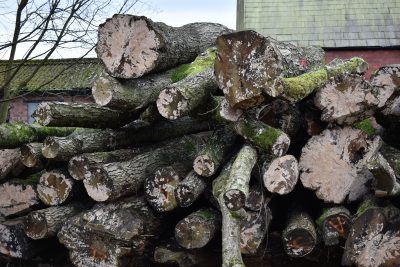
 Moving beyond the Walled Garden, we passed a series of old redbrick potting sheds which will continue to be the locus for the working part of the garden. Piles of salvaged materials such as stonework, bricks, cobbles and logs were stacked all about awaiting redeployment elsewhere in the developing site. This approach of seeking to re-use resources unearthed (literally) as the site has been cleared is a key part of the ethos of sustainable development being implemented at RHS Bridgewater.
Moving beyond the Walled Garden, we passed a series of old redbrick potting sheds which will continue to be the locus for the working part of the garden. Piles of salvaged materials such as stonework, bricks, cobbles and logs were stacked all about awaiting redeployment elsewhere in the developing site. This approach of seeking to re-use resources unearthed (literally) as the site has been cleared is a key part of the ethos of sustainable development being implemented at RHS Bridgewater.
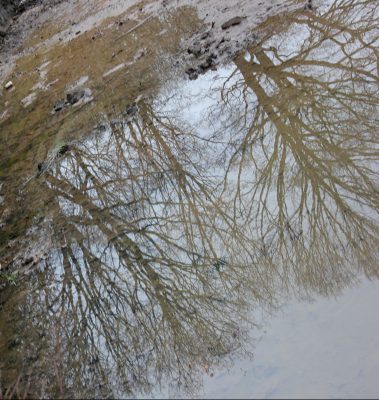
 One of the many fascinating aspects of the RHS Bridgewater site is the way in which nature has colonised the space vacated by its previous human occupants. An enormous quantity of the invasive shrub Rhododendron ponticum has been removed from across the area, opening up opportunities for other plants to start to re-emerge. Meandering through what is now an area of woodland, we reach the currently drained historical lake. This would have provided a beautiful vista as viewed from Worsley New Hall set above, with a series of terraces leading down to the water’s edge. Tree clearance is being undertaken to once again open up the view and it is intended that the lake will be returned to its former glory – islands, bridges, follies and all.
One of the many fascinating aspects of the RHS Bridgewater site is the way in which nature has colonised the space vacated by its previous human occupants. An enormous quantity of the invasive shrub Rhododendron ponticum has been removed from across the area, opening up opportunities for other plants to start to re-emerge. Meandering through what is now an area of woodland, we reach the currently drained historical lake. This would have provided a beautiful vista as viewed from Worsley New Hall set above, with a series of terraces leading down to the water’s edge. Tree clearance is being undertaken to once again open up the view and it is intended that the lake will be returned to its former glory – islands, bridges, follies and all.
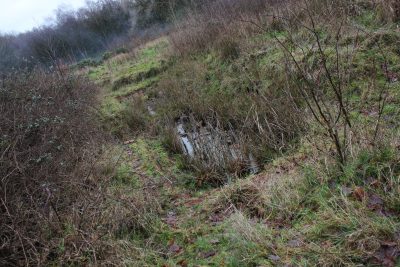
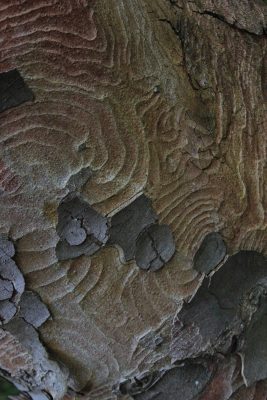 Climbing up to the highest point of the site that is currently accessible we found small remnants of the beautiful terraced gardens which were once adjacent to the Hall. Although photographs have been found which show how these would have looked there is no intention to restore this area as it was. Rather, future developments will be focussed on the contemporary. Nothing remains of the Hall itself which was demolished in 1949 after years of neglect, having been given over to the military with the advent of the First World War and never reoccupied.
Climbing up to the highest point of the site that is currently accessible we found small remnants of the beautiful terraced gardens which were once adjacent to the Hall. Although photographs have been found which show how these would have looked there is no intention to restore this area as it was. Rather, future developments will be focussed on the contemporary. Nothing remains of the Hall itself which was demolished in 1949 after years of neglect, having been given over to the military with the advent of the First World War and never reoccupied.

 Working our way back through the woodland towards our starting point we encountered a huge specimen of Rhododendron ‘Cynthia’, one of a number of distinct cultivars which are being propagated for re-establishment within the new garden. We also found an overgrown circle of Yew trees believed to have originally been formal hedging and used most recently by the Scout Association to host pow-wows. Similarly, a series of moss-covered stone blocks were used by the Scouts to mark out what was used as a consecrated outdoor chapel. Further evidence of the fascinating history of the site.
Working our way back through the woodland towards our starting point we encountered a huge specimen of Rhododendron ‘Cynthia’, one of a number of distinct cultivars which are being propagated for re-establishment within the new garden. We also found an overgrown circle of Yew trees believed to have originally been formal hedging and used most recently by the Scout Association to host pow-wows. Similarly, a series of moss-covered stone blocks were used by the Scouts to mark out what was used as a consecrated outdoor chapel. Further evidence of the fascinating history of the site.

As we returned to the vacated garden centre, which houses an exhibition describing the history of Worsley New Hall and the exciting plans for RHS Bridgewater, the site was a hive of activity. Local contractors, RHS garden staff and a host of volunteers are hard at work building what is sure to become a huge visitor attraction. It has been a privilege to be party to the development of RHS Bridgewater at this early stage, to hear about its history and about its next chapter. I look forward to visiting again as the seasons change and the plans become reality, to take inspiration from this incredible garden project.